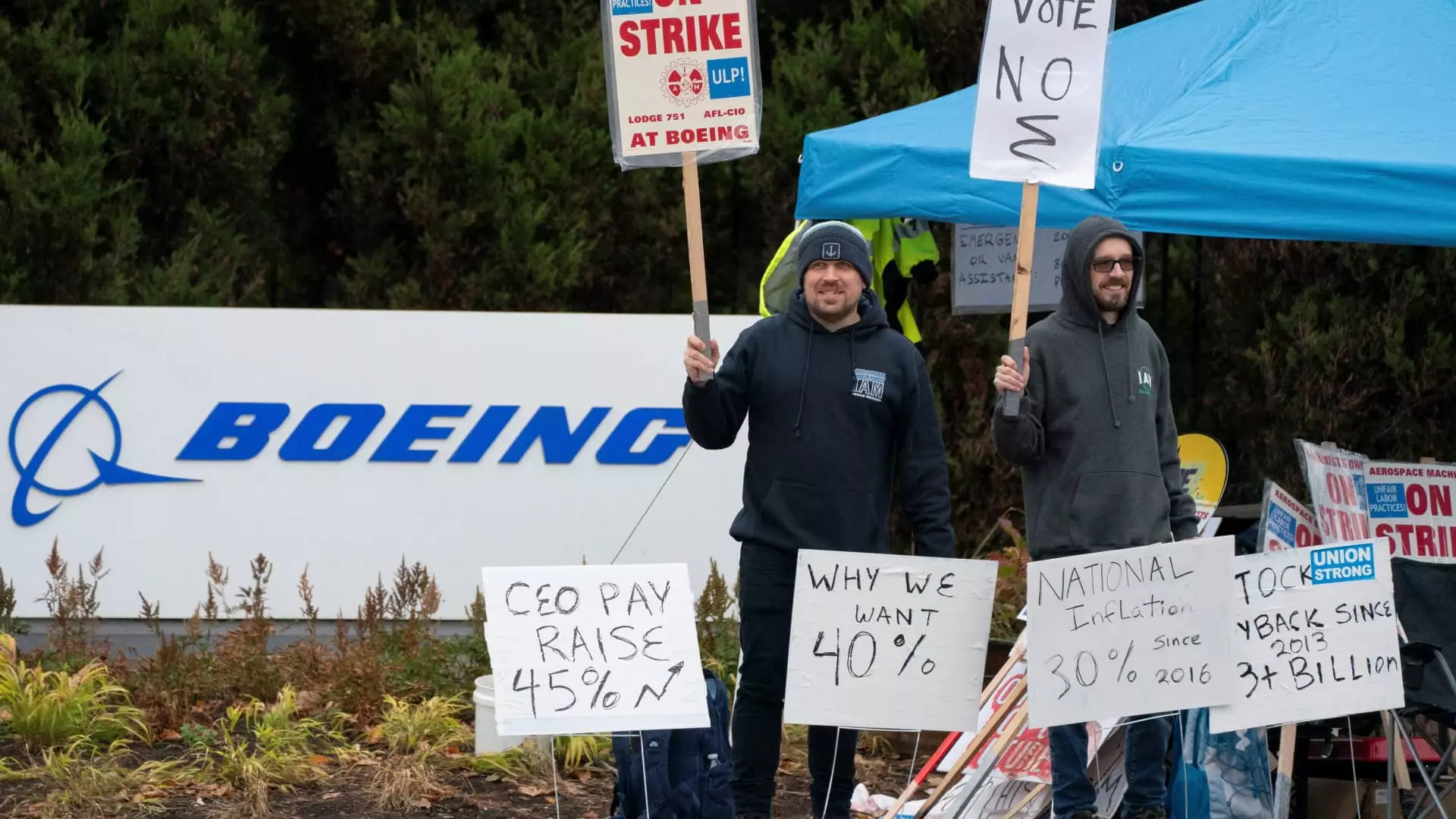In the world of manufacturing, few events shape a company’s trajectory like a labor strike, particularly one involving a heavyweight such as Boeing. Recently, the International Association of Machinists and Aerospace Workers District 751 and Boeing have reached a potential agreement that may alleviate a strike-induced crisis spurred by significant worker unrest. This strike, which has persisted for over seven weeks, not only signals labor discontent but also raises questions about the long-term sustainability of Boeing in the current economic landscape. As labor negotiations come to a head with a pivotal vote set for Monday, the broader implications of this strike extend beyond the factory floors and into the heart of American manufacturing.
High Stakes in Negotiations
At the core of the newly negotiated proposal lies a substantial pay increase—38% over four years—compared to the prior 35%. This might appear as a small adjustment, yet when compounded, the total wage increase approaches 44%, a significant boost for the 32,000 machinists primarily based in the Seattle region. Furthermore, workers are presented with a choice between a one-time ratification bonus of $12,000 or a previous offer comprising a $7,000 bonus coupled with a $5,000 401(k) contribution. This strategic move by the union reflects an acute awareness of the pressures their members face due to rising living costs, particularly in areas like Seattle, where competition with tech giants continues to grow.
In a notable statement, the union emphasized a necessity to rally behind this agreement: “Asking our members to strike longer wouldn’t be right given that we have achieved so much success.” This comment bears weight, as maintaining a strike requires not only resolve but also financial stamina, and exhaustion runs deep among workers who have already faced significant uncertainty.
The timing of this negotiation could not be more critical for Boeing. Facing mounting losses exceeding $6 billion in the last quarter alone, the aerospace giant is aware that a swift resolution is essential to recoup damages and stabilize its operations. Boeing’s recent performance, compounded by ongoing production flaws and safety issues—including a troubling incident involving a Boeing 737 Max 9—illustrates the pressing need to mend its operations. Company CEO Kelly Ortberg encapsulated this urgency in a note to staff, stating, “It’s time we all come back together and focus on rebuilding the business.”
This sentiment underscores a shift toward collaboration amid escalating tensions. Throughout the strike, Boeing has dealt with not just financial ramifications, but reputational damage among stakeholders—and a rift in labor relations affects every aspect, from production to delivery timelines.
Political Intricacies and Economic Implications
Adding another layer to this intricate scenario, the Biden administration has stepped into the fray, highlighting the national significance of this strike for U.S. employment numbers. Labor Secretary Julie Su’s recent engagements reflect a broader interest in maintaining the stability of a major employer that contributes significantly to the national economy. President Biden’s congratulations to both parties for the newly proposed contract reveal an acute awareness of how labor disputes can ripple through the economic fabric.
The implications of the strike on U.S. employment statistics cannot be understated, particularly in light of the impending presidential election. Labor dynamics often serve as a barometer for broader economic health, influencing voter sentiment and policy initiatives.
Despite the positive strides in negotiations and the potential resolution of the strike, challenges remain entrenched within Boeing’s operational framework. The decision to relocate 787 Dreamliner production to a non-union facility in South Carolina has left lingering resentment among workers, serving as a reminder of the fragility of labor relations. As Boeing proposes to manufacture future aircraft in the Puget Sound area, restoring trust and morale will be paramount.
Going forward, it is clear that the articulation of a strong contract is not merely a matter of appeasing workers but is also about fostering a cooperative environment that promotes stability and productivity. With the turbulence of recent months, the road ahead will require mindful navigation through labor expectations, industry competition, and the broader economic context. The outcome of the upcoming vote will not only determine the fate of Boeing’s workforce but may also serve as a defining moment in labor relations across the American manufacturing landscape.

